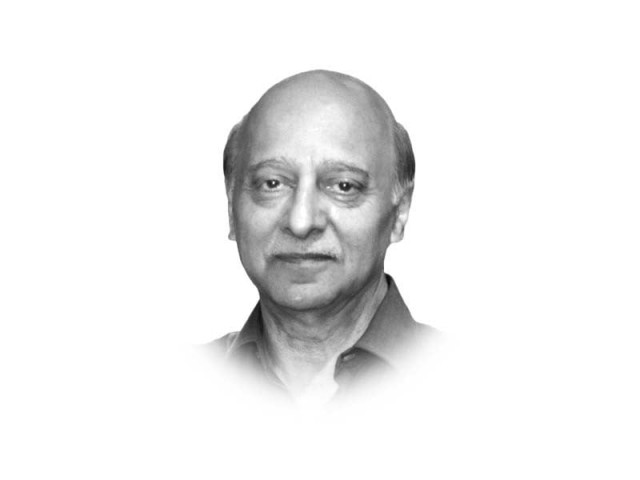Murree tragedy and fractured state institutions
Murree tragedy and fractured state institutions

The Murree tragedy clearly denotes Pakistan’s fractured governance system. It has exposed the underlying conditions that various arms of governance — the district administration under the Deputy Commissioner, the disaster management authorities both at national and provincial levels, and the police — suffer from. The tragedy also reflects the lack of planning and preparation on the part of common citizens.
The death of around two dozen helpless tourists left stranded in the snow has exposed the propensity of politicians for using such tragedies for political point-scoring. The way the opposition hurled all sorts of innuendos at the federal and the Punjab government has betrayed the self-serving instincts of these leaders. Equally pathetic was the lack of coordinated response by key members of the federal cabinet as well as the cabinets in Punjab and K-P provinces. For hours, they were contradicting one another, leading to more and more confusion on the matter. The PDMA was missing altogether while the NDMA chief took to the media later in the afternoon to explain what all it had done.
What does all this underline? Well, it simply highlights the massive fractures in our governance structures where dozens of public sector enterprises (PSEs) loaded with thousands of employees cannot build or develop. Led by in-service or retired civilian/military bureaucrats, these institutions are merely a source of hefty salaries, perks and privileges. But cumulatively they are bleeding the national exchequer.
At least 134 PSEs are gobbling up around $4 billion annually. Most are running in deficits. Those deficits are filled in through public money which is essentially borrowed funds, either internally or from foreign sources. Currently, we are all witnessing the implications of foreign loans. For a $1 billion instalment of a package, the government almost surrendered to the IMF, playing havoc with the taxation regime and the Pakistani currency. Let us survey three PSEs — namely the Pakistan Steel Mills (PSM), the Civil Aviation Authority (CAA) and the Pakistan International Airlines (PIA) — to explain the rot within the governance structures. All three resemble a microcosm of governance problems that Pakistan faces as a whole.
In a report the PIA submitted before the Supreme Court in June 2018, it spoke of accumulated losses of Rs356 billion against assets of only Rs111 billion. “The PIA is only able to continue operating due to the government’s financial support,” the report had said. The airline posted net losses of Rs25,013 million in first six months of 2021, down from Rs36,536 million in the same period in 2020 — 31.5% lower than the previous year. The major reason behind lower revenues was the suspension of regular flights to the UK and Europe in the first quarter of 2021. This, nevertheless, is no reason for continued mismanagement, overstaffing, poor quality flight catering, and ill-treatment of passengers affected by flight delays or cancellations.
This is also partially linked to CAA, the lynchpin for flight operations and airport management. An organisation that has grown in size and operation has both successes as well as shortcomings. Of late, all of a sudden, CAA decided to repair the Lahore runway, which was built less than two decades ago. It also pulled down the expensive Instrument Landing System (ILS) early December just about when the smog had begun enveloping Lahore and its extended vicinity. The Lahore airport handles about 30 domestic and international flights daily. The sudden repairs of the runway and the downing of the ILS beginning in early December led to large-scale disruptions — flight delays, diversions to Islamabad, and cancellations. Ironically, CAA’s poor governance often results in delays, cancellations and diversions of substantial number of flights, but it is PIA that gets the flak for it. It is PIA that suffers financially. And CAA’s actions also cause much discomfort among foreign airlines that are forced to reschedule their flights because of problems at airports in Karachi, Lahore, Islamabad and Peshawar. The combined poor performance of these two organisations eventually puts Pakistan in a bad light. Does anyone bother about this?
The PSM represents another dismal picture of a state-controlled enterprise. It costs the national exchequer billions of rupees every year. PSM’s debt and liabilities have soared above Rs650 billion. Deeply entrenched status quo forces and various ministries — the Ministry of Industries and Production, the Ministry of Finance, the FBR, the Privatization Commissions, private contractors, and corrupt officials within PSM — continue to collude against privatisation or revival of the mills, which remain shut down since 2015 but is still incurring Rs80 million every month for gas utilisation. The total SSGC bill payable by PSM up to 20 December 2021 stood at Rs78.894 billion.
Mysteriously, all of the chairmen of the Privatization Commission — Dr Hafeez Sheikh, Naveed Qamar, Mohammad Zubair Umar, Mohammadmian Soomro and others — have failed in divesting PSM which boasts 19,600 acres of developed land. It is an altogether different matter that more than 1,000 acres have already disappeared into housing schemes. PSM is still devouring billions monthly, with a retired brigadier as its CEO.
Also, in these cases, the PTI government has failed. Prime Minister Imran Khan’s promise of divesting big bleeding state enterprises has hit a dead end. One wonders whether he will, at all, be able to extricate his decision-making from the clutches of the self-serving status that continues to cling to the 19th century governance regime.
Published in The Express Tribune, January 11th, 2022.
Like Opinion & Editorial on Facebook, follow @ETOpEd on Twitter to receive all updates on all our daily pieces.















COMMENTS
Comments are moderated and generally will be posted if they are on-topic and not abusive.
For more information, please see our Comments FAQ